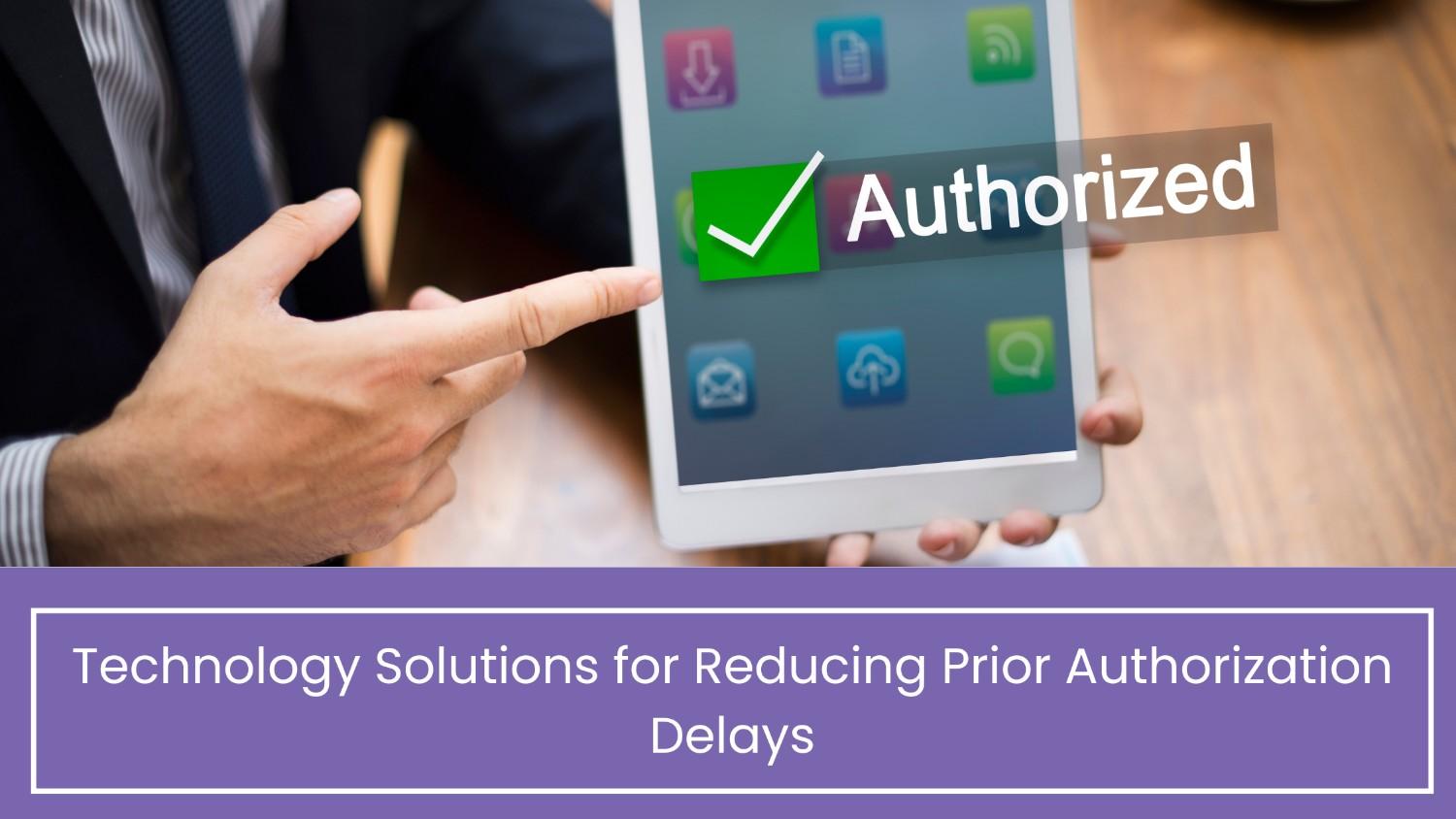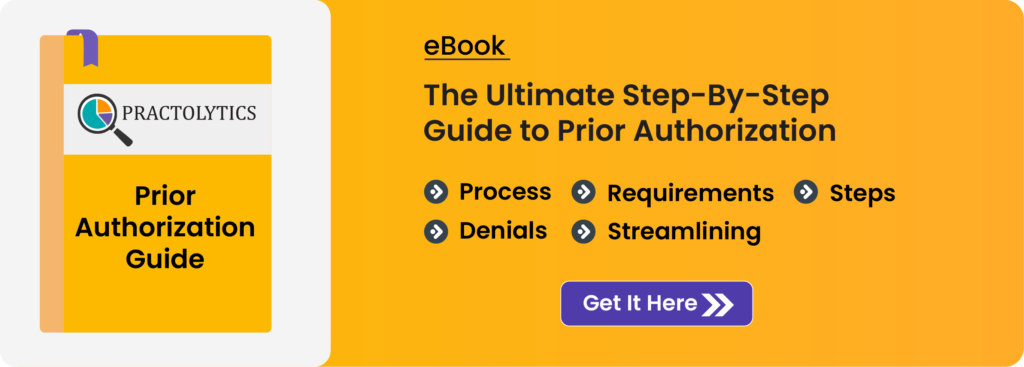Technology Solutions for Reducing Prior Authorization Delays
In the dynamic healthcare sector, one aspect persists: the need for prior authorizations. This step is vital for aligning patient care with insurance protocols, often resulting in delays and administrative complexities. Physicians face disruptions in patient care, dissatisfaction among patients, and excessive paperwork due to these delays. Nevertheless, technological advancements, like AI and EHRs, offer a promising remedy. These innovations are facilitating a smoother, more efficient, and less burdensome prior authorization process.
In this article, we’ll discuss how technologies are altering prior authorization processes, potentially cutting down on delays, boosting patient care, and enhancing healthcare practice efficiency
Table of Contents
Understanding Prior Authorization: A Vital Yet Complex Process
Prior Authorization serves as a method employed by insurance entities to assess the eligibility of a prescribed course of action, service, or pharmaceutical. This process seeks to validate the medical necessity and fiscal prudence of the provided care. Nonetheless, its convolutions often introduce notable hindrances, resulting in prolonged waiting times. Consequently, healthcare providers are diverted from delivering primary patient services to administrative tasks.
The conventional process before authorization encounters numerous hurdles:
- Manual Documentation: The submission of requests necessitates manual form completion, consuming time and prone to mistakes.
- Fragmented Communication: The exchange of information between healthcare entities and insurers is disjointed, resulting in delays and document loss.
- Lack of Standardization: Each insurer has unique requirements and form structures, complicating matters.
- Approval Wait Times: The duration for approval spans from days to weeks, causing setbacks in vital medical interventions.
The Role of Technology in Revolutionizing Prior Authorization
The incorporation of cutting-edge technologies like AI and EHRs presents significant potential in transforming the prior authorization process. Here’s how these technologies are reshaping the landscape:
Artificial Intelligence and Machine Learning
These technologies are pivotal in the overhaul of prior authorization. Their adeptness in data processing and predictive analysis stands to reduce delays and optimize operations.
- Automated Data Processing: AI streamlines data extraction and entry from medical records into authorization forms, easing doctors’ paperwork burden and minimizing inaccuracies. For example, NLP algorithms swiftly extract data from EHRs for form completion.
- Predictive Analytics: AI forecasts approval likelihoods based on historical and patient-specific data, empowering doctors with informed decision-making abilities and decreasing denial rates.
- Intelligent Routing: AI algorithms prioritize authorization requests, expediting critical cases and ensuring timely treatments.
- Real-time Decision Assistance: AI swiftly assesses treatment necessity and approval probabilities by correlating patient data with insurer criteria, facilitating prompt and precise request submissions.
Electronic Health Records (EHRs)
Electronic Health Records (EHRs) have reshaped the storage and access of patient data. When combined with advanced technologies like AI, they can significantly hasten the prior authorization process.
- Smooth Data Integration: EHRs act as a central storage for patient data, easily blending into prior authorization requests, removing the need for manual data entry, and ensuring all necessary data is readily available.
- Compatibility: Modern EHR systems are increasingly designed for compatibility, enabling seamless communication and data exchange between healthcare systems and insurers, reducing communication time and ensuring data accessibility.
- Automated Alerts and Reminders: EHRs can issue automated alerts and reminders for pending prior authorization requests, ensuring timely follow-ups without oversight.
- Traceability and Documentation: EHRs maintain detailed logs of interactions and changes to patient records, vital for disputes or appeals, providing clear records of prior authorization activities.
Case Studies: Successful Implementation of Technology Solutions
Case Study 1: A prominent healthcare institution in the U.S. adopted an advanced system driven by artificial intelligence to handle prior authorization challenges. By utilizing AI algorithms, they automated data extraction from patient records and accurately projected approval outcomes, leading to faster processing and enhanced patient experiences.
Case Study 2: Another leading healthcare provider integrated their electronic health records system with sophisticated interoperability capabilities to optimize prior authorizations. By facilitating smooth data exchange with insurers, they minimized manual input time and introduced automated notifications, resulting in a more streamlined authorization process.
Challenges and Considerations in Implementing Technology Solutions
Although there are substantial benefits to merging AI with Electronic Health Records (EHR), it’s important to be aware of various challenges and factors.
Data Security: Incorporating AI with EHR systems means managing lots of private patient data. It’s crucial to ensure strong data protection to safeguard against unauthorized access.
Standards in Interoperability: True interoperability needs sticking to standardized data formats and communication rules. It’s tough due to the variety of EHR systems and insurers. Efforts to establish common standards are vital for smooth integration.
Training Needs: Medical staff must be trained well to use these advanced tools. Resisting change or being unfamiliar with new systems can stall progress.
Compliance with Regulations: Healthcare tech must meet regulations. Keeping in line with rules while bringing in new tech needs careful planning
The Future of Prior Authorization: A Vision of Seamless Integration
Envision a world where prior authorization is effortlessly merged with everyday healthcare routines through the use of modern technology. This is a potential picture of what that future might resemble:
Fully Automated Prior Authorization: Looking ahead, systems powered by advanced technology might take over the entire process of prior authorization. These systems could be capable of handling tasks such as extracting and entering data, supporting decisions in real-time, and routing information intelligently. This would help doctors by reducing their administrative workload, enabling them to devote more time to caring for patients.
Immediate Authorization: Combining artificial intelligence with medical records systems allows for instant prior authorization approvals. Physicians can get immediate information about the necessity and potential approval of treatments during patient visits, facilitating prompt decisions and reducing waiting times.
Predictive Healthcare: Artificial intelligence’s ability to forecast can extend past just prior approvals, moving into proactive health management. By looking at patient information and past trends, AI can predict possible health issues and recommend preventive steps, leading to enhanced patient health and decreased medical costs.
Enhanced Patient Experience: These technological advancements aim to improve the overall patient experience. By cutting down on prior authorization wait times, patients can access treatments and medications more quickly, leading to improved health and higher satisfaction.
Conclusion: The Road Ahead in Healthcare Enhancement
The process preceding authorization, though vital, has posed persistent challenges for medical professionals and those seeking care. Nevertheless, the introduction of advanced technological tools, such as AI and EHRs, provides a promising path forward. These innovations streamline data entry, offer immediate decision support, and ensure seamless data cohesion, effectively alleviating authorization delays and bureaucratic complexities.
For doctors, this means more time to focus on what truly matters: providing quality care to patients. For patients, it means timely access to necessary treatments and medications, leading to better health outcomes and improved satisfaction.
At Practolytics, our mission is to support healthcare professionals in utilizing tech to address authorization issues. With our advanced tools, we aim to improve healthcare systems without attracting unwanted attention. Are you interested in optimizing your procedures? Connect with us to explore discreet solutions tailored to your needs. Let’s work together silently to revolutionize healthcare without raising any alarms.
ALSO READ – The Impact of Prior Authorization on Patient Health Outcomes
Talk to Medical Billing Expert Today — Get a Free Demo Now!






